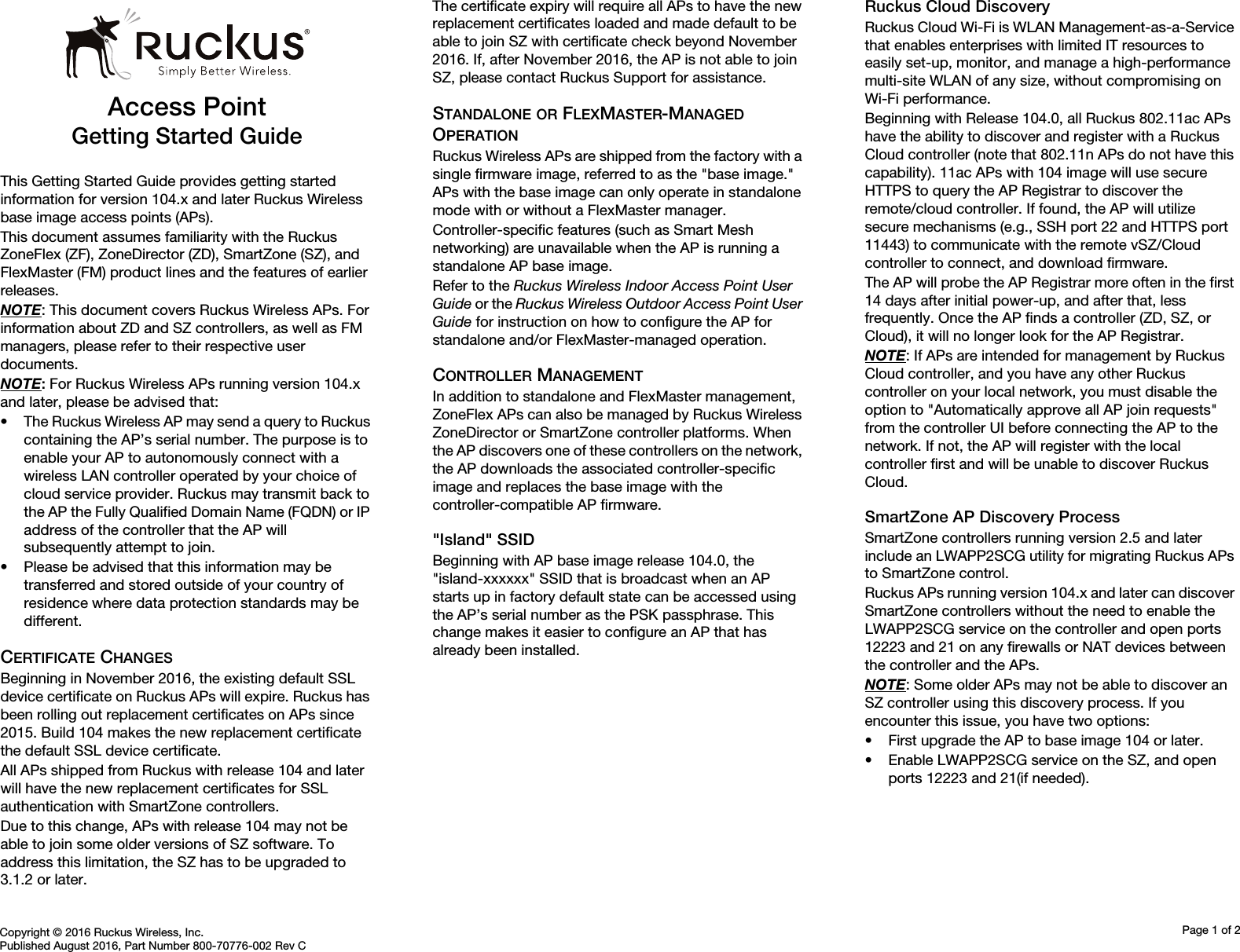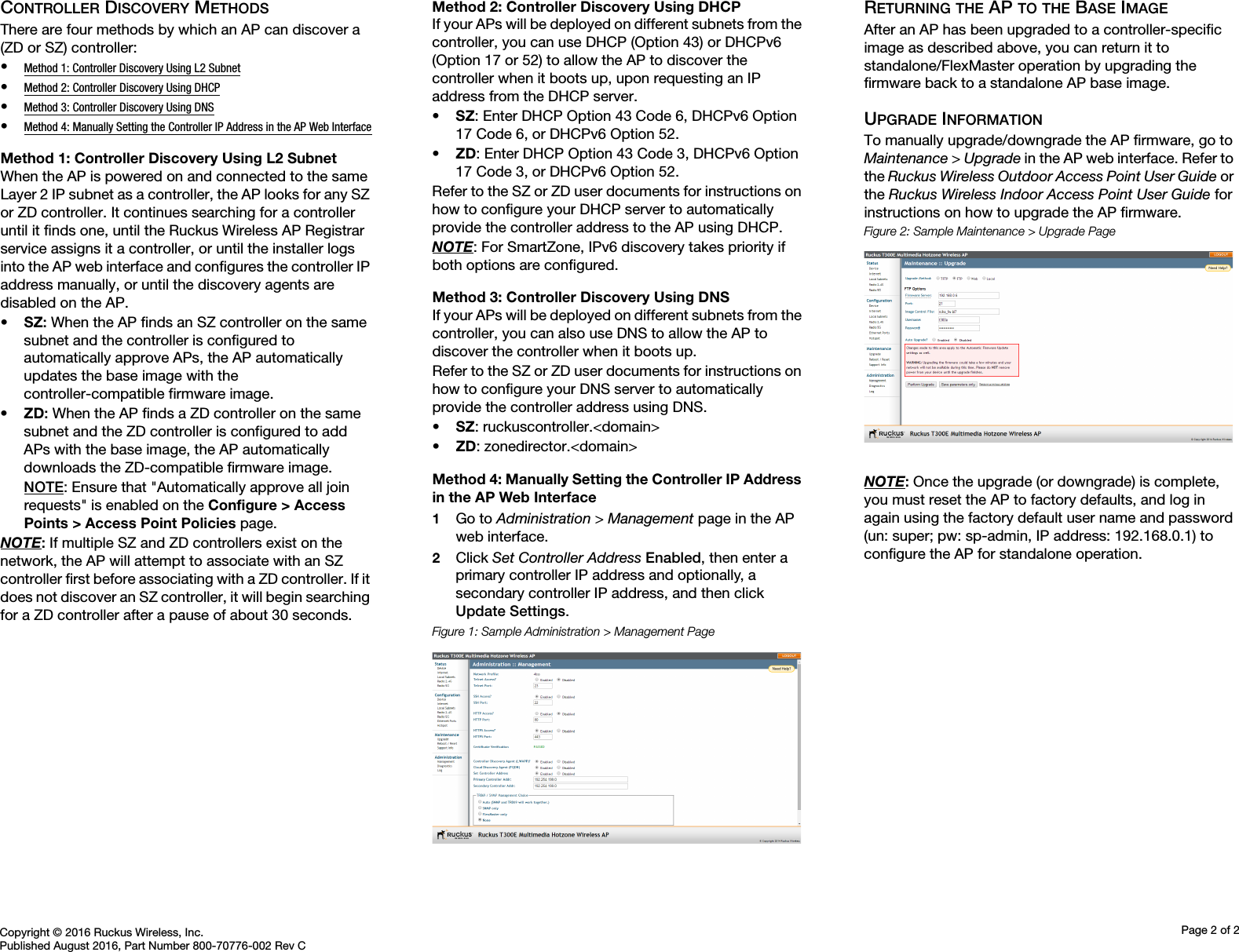Ruckus Wireless R720 R720 Access Point User Manual Ruckus Wireless Access Point Getting Started Guide
Ruckus Wireless, Inc. R720 Access Point Ruckus Wireless Access Point Getting Started Guide
Contents
- 1. Users Manual
- 2. Regulatory Flyer
Users Manual

